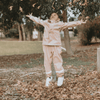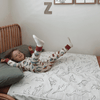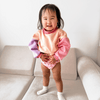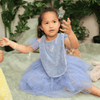Have you heard of elimination communication before? It’s a form of potty training unlike any other we often see in New Zealand. Instead of waiting until your toddler is two or three, babies even from birth are taken to the toilet for their wee and poo movements. This may seem rather weird or even impossible, but there are many parents and even experts who rave about infant potty training. Today we’re going to look more into elimination communication, what it is, when it started and the benefits of using it with your children.
What is Elimination Communication?
Elimination communication, or EC, has been around for centuries. Mothers have been keeping their babies clean and dry without nappies for hundreds of years in many cultures throughout the world. In western countries though, it was not so common until the 1970’s when a man who had recently visited Asia, came back and taught parents how use it with their babies. Since then there have been many studies done and books published on EC around the world.
But what is it? Baby potty training is essentially responding to your baby’s toilet cues as you would to their feeding cues. By observing their facial movements, common toileting times and sounds, you learn what their toileting cues are. Before they go, you simply hold them above the potty or toilet and make a sound like a whistle or a hiss which they learn to associate with going to the toilet.
What Are the Benefits of Elimination Communication?
There are many different benefits to infant potty training. They include:
- Saving money on disposable nappies
- No washing of cloth nappies
- A baby is more comfortable not wearing hot and bulky nappies
- Fewer cases of nappy rash as they are not sitting in soiled nappies
- Make independent potty training or toileting easier as your child gets older
- Less chance of constipation as the baby sits up, rather than lies down to poo
- More environmentally friendly
- Increased bonding with parents as constant watching of baby is required
If you would like to try EC with your young baby, but are worried about potential accidents, don’t be! Simply use a waterproof Brolly Sheet under your baby and even a pair of training pants to catch any leaks that may occur when you are both learning this potty training method. For more information and help with potty training, check out our potty training products and our blog for great ideas!








